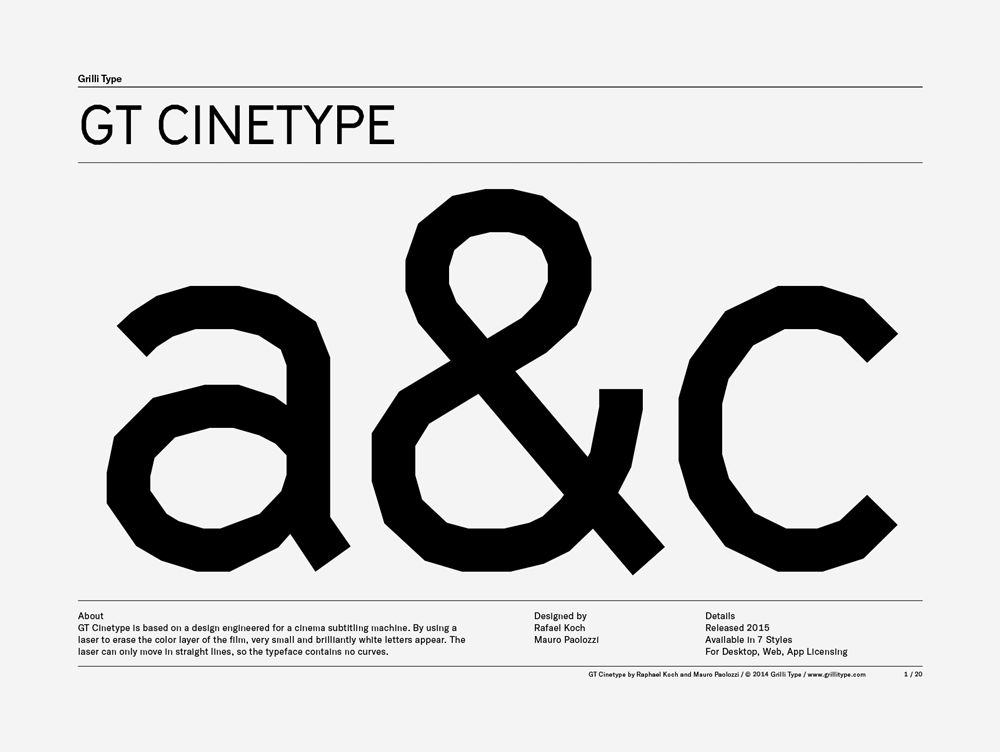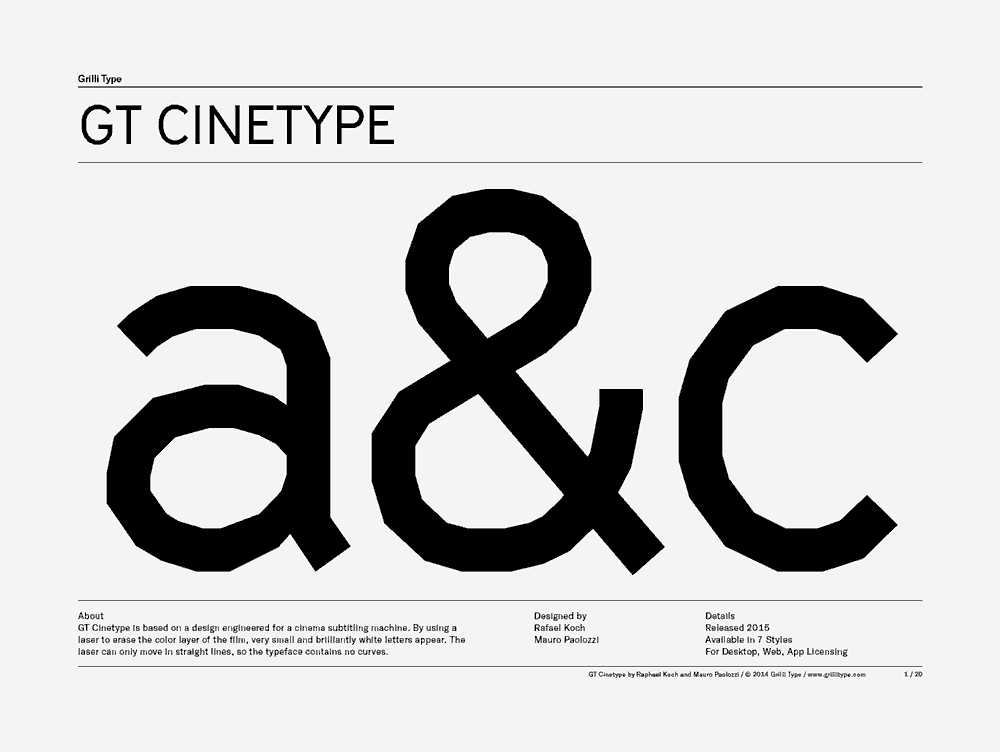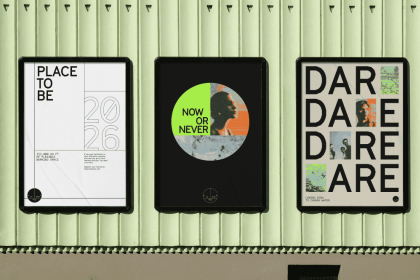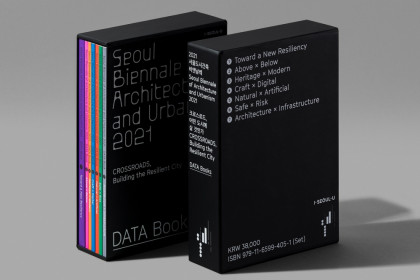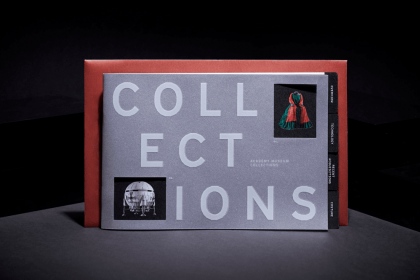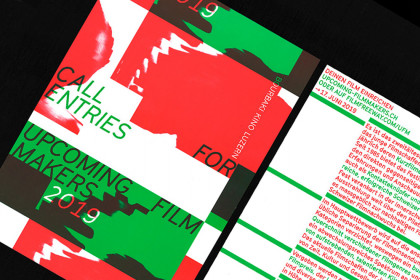GT Cinetype
Family overview
- Light Italic
- Regular Italic
- Bold Italic
- Mono
- LightPulp Fiction 1994 by Quentin Tarantino with John Travolta, Uma Thurman, Samuel L. Jackson
- Light ItalicBefore Sunrise 1995 by Richard Linklater with Ethan Hawke, Julie Delpy, Andrea Eckert
- RegularThe Exorcist 1973 by William Friedkin with Ellen Burstyn, Max von Sydow, Linda Blair
- Regular ItalicMad Max 2: The Road 1981 by George Miller with Mel Gibson, Bruce Spence, Michael Preston
- BoldGodzilla 1977 by Ishirô Honda with Raymond Burr, Akihiko Hirata, Momoko Kôchi
- Bold ItalicFight Club 1999 by David Fincher with Brad Pitt, Edward Norton, Meat Loaf
- MonoMad Max 2: The Road 1981 by George Miller with Mel Gibson, Bruce Spence, Michael Preston
- Settings
Typeface information
GT Cinetype is based on a design engineered for a cinema subtitling machine. By using a laser to erase the color layer of the film, very small and brilliantly white letters appear. The laser can only move in straight lines, so the typeface contains no curves.
Typeface features
OpenType features enable smart typography. You can use these features in most Desktop applications, on the web, and in your mobile apps. Each typeface contains different features. Below are the most important features included in GT Cinetype’s fonts:
- CASE
- Case sensitive forms
(ROBOCOP)
- ONUM
- Oldstyle figures
10.03.1985
Typeface Minisite
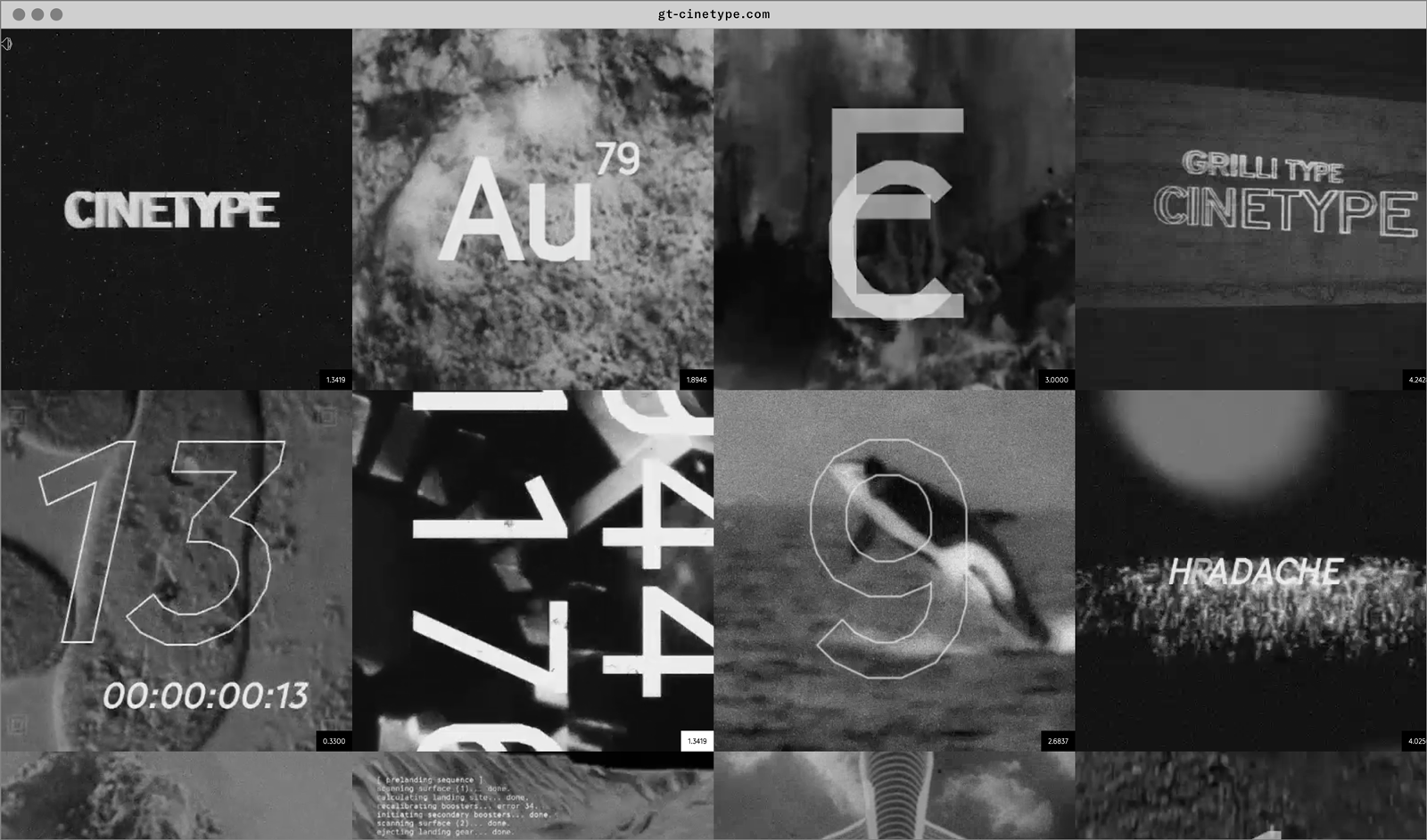
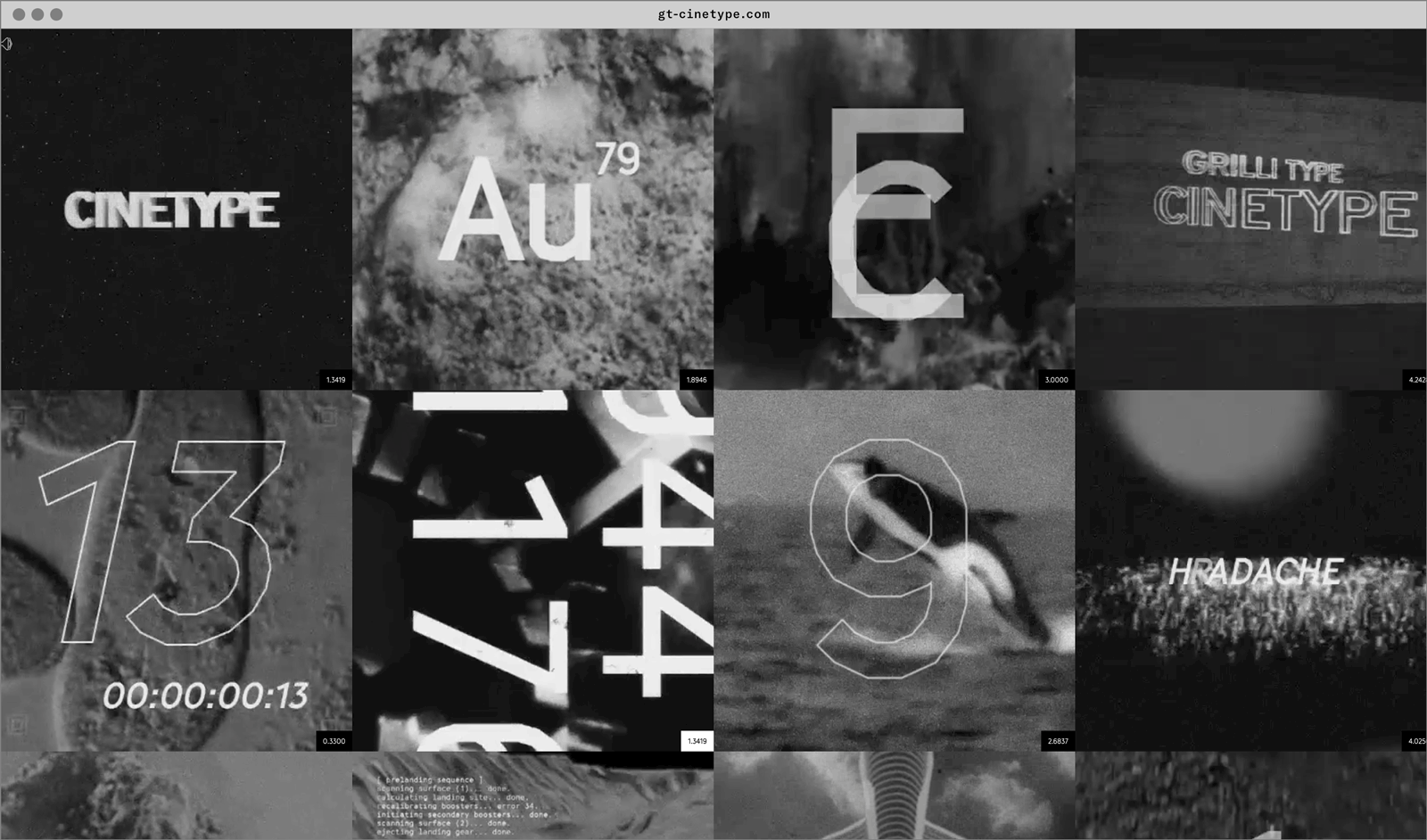
- Visit the GT Cinetype minisite to discover more about the typeface family’s history and design concept.
GT Cinetype in use
